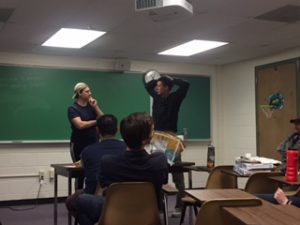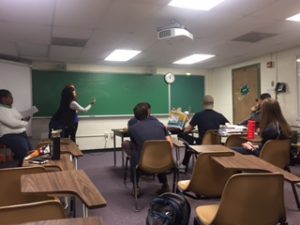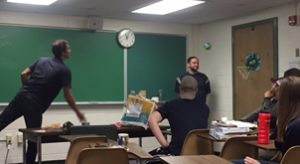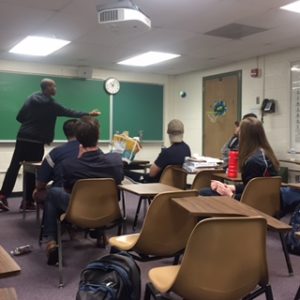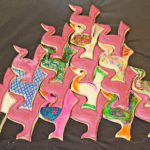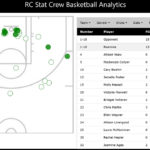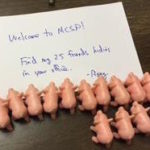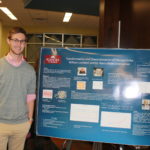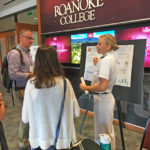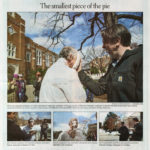Wow, what a whirlwind of a semester so far! I just realized that November is just around the corner! Where did October go? I’m sure our students are wondering the same thing.
We’ve had quite some fun with the Roanoke College Math Club this Fall. So far we’ve learned about the game Farkle and the Birthday Probability Problem, been mystified by the magical Dr. Dave Taylor, had our first AlgeBrawl, attempted to play the basketball game STATS (the extra-cool version of HORSE), and had an incredible bowling night. I told you – we’ve been busy!
Wait…what’s Farkle? What’s the birthday probability problem? What on Earth is an AlgeBrawl?
Why are you asking ME all these questions!!!! Ok, ok, I’ll elaborate.
Farkle is a dice game that has taken over the RC MCSP department several times. If you walk down the hall near Trexler 270 and you hear the sound of dice hitting a desk and wild laughter, you know it’s the MCSP faculty going a little crazy with the Farkle. For each turn, a player rolls six dice, and the goal is to earn as many points as you can. You earn points by rolling a straight, three pairs, three of a kind, ones, fives, etc. Each of these types of rolls is worth so many points. With each roll on your turn, you have to “score” some points – meaning you have to save the dice that are worth points and not re-roll those. If you use up your dice, you can re-roll all of your saved dice. However, if you at any point roll dice and don’t score any points, you “Farkle”, meaning you forfeit all points for that turn. Here’s a nice site with the rules more clearly explained and elaborated: Farkle Rules.
The extra cool thing about Farkle is that it leads to great discussions about probability! Should you take the chance to keep rolling dice in hopes of earning more points, or should you stop rolling at a certain point? How likely is it to get a Farkle? How likely is it to get 3 pairs? And we can keep asking more and more questions! It’s incredible! Plus, playing the game is loud and you can be obnoxious without getting in trouble – “hahaha, you Farkled!!!” is completely acceptable!
Ok, so after going a little crazy with Farkle, we found out that the next Math Club meeting fell near someone’s birthday! Crazy, right? We thought it would be fun to relate birthdays to probability…and eat cake, of course. Let’s start with the following assumption – there are no leap years, i.e. there are 365 days in a year. Now, if I asked you, what’s the probability that two people share a birthday in a room containing 366 people, you’d say…??? 150% you say? Well, let’s keep these percentages between 0 and 100. Oh, ok, so 100% you say – right! We actually call this the pigeonhole principle. Another example of this is the statement “there must be at least two left gloves or two right gloves in a group of three gloves.”
Well, what if we wanted to know the probability that in a room of 25 people, at least 2 people share a birthday? Let’s add one more assumption – let’s assume each day of the year is equally likely to be a birthday. A common thing to do in probability is to use the fact that the probabilities of all different events sum to 1. So, instead of finding the probability that an event occurs, we can find the probability that the event does NOT occur and subtract it from 1. In other words, we’ll find the probability that no one shares a birthday in the group of 25 and subtract it from 1.
Let’s do some math!! So, pick any 1 of the 25 people – their birthday could fall on any one of the 365 days in the year. But when we pick a second person in the group of 25 people, they cannot have the same birthday – so their birthday could fall on any of the 364 days that don’t match person 1’s birthday. The third person’s birthday would have to fall on one of the other 363 days, and so on. We want all of these to happen at the same time, so we multiply their corresponding probabilities:
In other words, the probability of at least 2 people sharing a birthday in a group of 25 people is almost 57%!!!! That’s crazy!
Our version of AlgeBrawl was a combination of the Integration Bowl we had last year and Jeopardy – but related to Algebra. The students got into groups and attempted to solve algebra problems as quickly, and correctly, as possible. Each team was given three lifelines – ask a teammate, swap with a teammate, or phone a professor. The problems varied in level of difficulty – some were arithmetic, others were solving equations, there were logic puzzles, and factoring polynomials…and the challenge problem involved synthetic division. The students and faculty all had a blast!
And, today, we heard from our very own Roanoke College Stat Crew, a club on campus dedicated to collecting data for the different sports on campus and analyzing the data to help provide information to the coaches. The students participating in the Stat Crew gain valuable experience with sports analytics, and some have participated in internships because of these experiences.
After hearing about the projects two students worked on during their internships, we played the basketball game of STATS (very similar to HORSE). Students paired up to try to not only answer questions about stats and sports correctly, but also to make the basket! If they answered the question correctly, they could attempt to make the shot; if not, they accrued a letter in STATS. If they missed the shot, they got a letter. Their goal? To make 4 shots – which increased in distance (and hence difficulty) before getting all the letters in STATS.
Here are some incredible snapshots:



